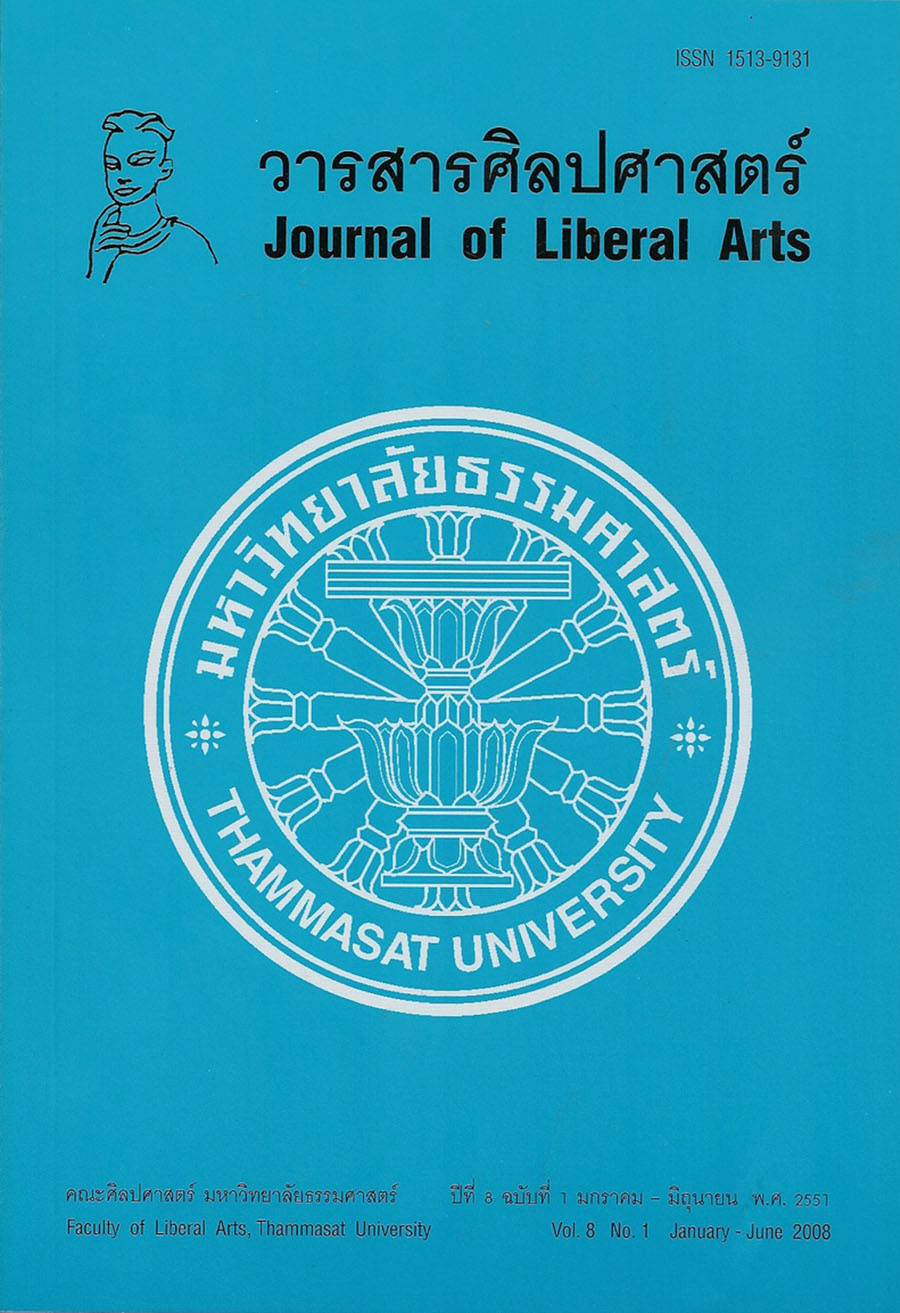The Khim in Thai Culture: Adoption and Adaptation
Main Article Content
บทคัดย่อ
The Khim is a stringed instrument essential to Thai classical music. It was adoped from China during the late Ayutthya period (1350-1767 AD). Chinese adopted the Khim or Yang-qin from Persia during the Ming-Qing dynasty (1368-1911 AD)
“Khim” is a borrowed word from the Chinese Fujian dialect meaning music or music instrument or /qín/ in Mandarin. It was played in Chinese Opera (Chaozhou opera), and became very famous and popular in Thai Chinatowns in the Rattanakosin period (1782 AD - now). About 100 years ago during the the reign of King RamaVI Thai classical musicians adopted the Khim to play in Thai classical music. Thai composers have composed many Thai songs that use the Khim as a solo instrument.
The Khim had an important role in “Khoo Kam” a Thai novel that made Thai people become interested in the Khim. It is a popular music instrument used by Thai primary school students to start to learn Thai classical music. It is often used in Thai public entertainment venues such restaurants, hotel lobbies etc. It represents Thai classical music in the minds of many people.
This paper will present the Khim as a Thai classical music instrument and how it was adopted and adapted into Thai society, and will focus on its history, development, form and character (i.e. shape, style, material, color, string, tuner, the painting on its box). This paper will explore and discuss its role in Thai culture both in ancient times and today.
ขิม เครื่องดนตรีไทย ประเภทเครื่องสายไทยใช้ตี เป็นเครื่องดนตรีที่ไทยรับมาจากประเทศจีนตั้งแต่สมัยอยุธยาตอนปลาย แต่เดิม ขิม เป็นเครื่องดนตรีที่จีนรับมาจากเปอร์เซีย เข้าไปแพร่หลาย และเป็นที่นิยมในประเทศจีนราวสมัยราชวงศ์หมิง-ชิง
คำว่า ขิม เป็นคำยืมจากภาษาจีนถิ่นฮกเกี้ยน ขิมนำเข้ามาในประเทศไทยโดยชาวจีนตั้งแต่สมัยอยุธยาตอนปลาย เดิมใช้บรรเลงในวงดนตรีจีนที่ประกอบการแสดงงิ้ว จนมีชื่อเสียง และเป็นที่นิยมชื่นชอบในเขตชุมชนจีนแบบเยาวราชในสมัยรัตนโกสินทร์ตอนต้น ขิมเป็นที่นิยมบรรเลงในวงดนตรีจีน เนื่องด้วยเป็นเครื่องดนตรีที่เรียนง่าย บรรเลงง่าย เสียงไพเราะ ในสมัยรัชกาลที่ 6 นักดนตรีชาวไทยจึงได้นำขิมเข้ามาร่วมบรรเลงในวงดนตรีไทยเดิม นอกจากนี้ยังมีการประพันธ์เพลงเดี่ยวสำหรับขิมไว้มากมาย
ขิม ได้เข้าไปมีบทบาทในนิยายไทยเรื่อง คู่กรรม ทำให้คนไทยรู้จักขิม และยังกระตุ้นให้คนไทยสนใจดนตรีชนิดนี้มากขึ้น ขิมเป็นเครื่องดนตรีไทยที่นักเรียนในระดับประถมศึกษานิยมเรียนกันมากเป็นอันดับหนึ่ง ขิมเปรียบเสมือนเป็นสัญลักษณ์ของดนตรีไทย ปัจจุบันนิยมบรรเลงขิมในสถานที่สาธารณะต่างๆ เช่น ร้านอาหาร ลอบบี้โรงแรม เป็นต้น
บทความนี้จะนำเสนอ ขิม ในฐานะเครื่องดนตรีไทยที่มีบทบาทในวัฒนธรรมไทยว่ามีการรับ และปรับใช้อย่างกลมกลืนอย่างไร โดยศึกษาทั้งประวัติความเป็นมา ลักษณะทางกายภาพ บทบาท และความสำคัญของขิมในวัฒนธรรมไทยปัจจุบัน


